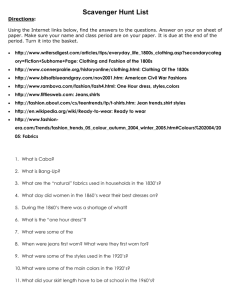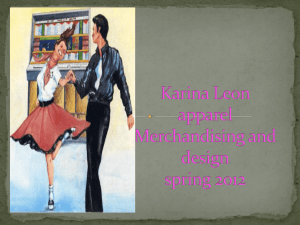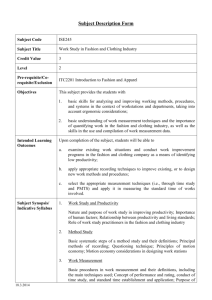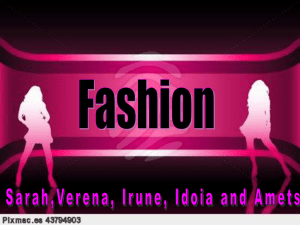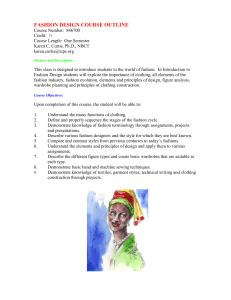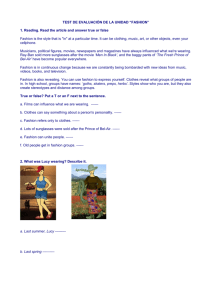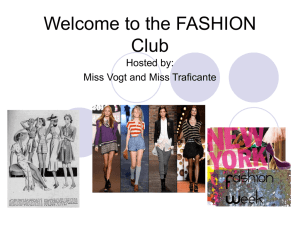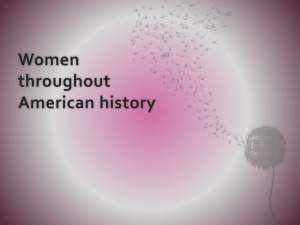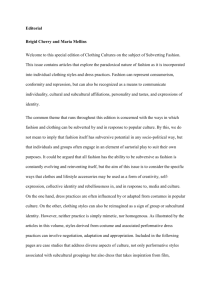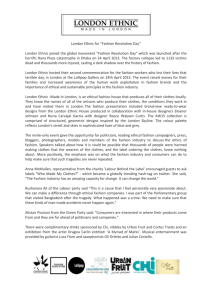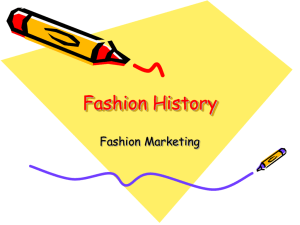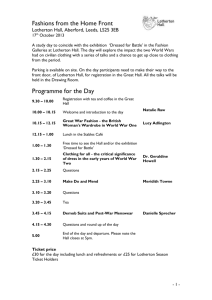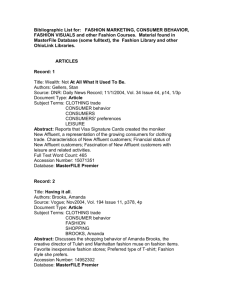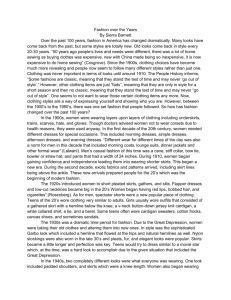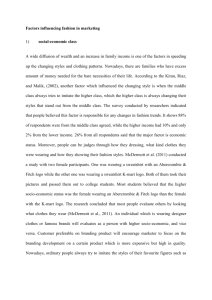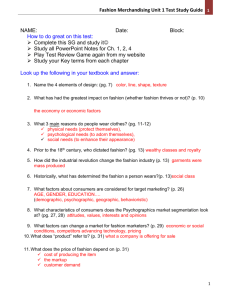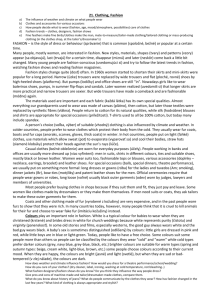Fashion: KEY Chapter 1 Quiz Study Guide
advertisement
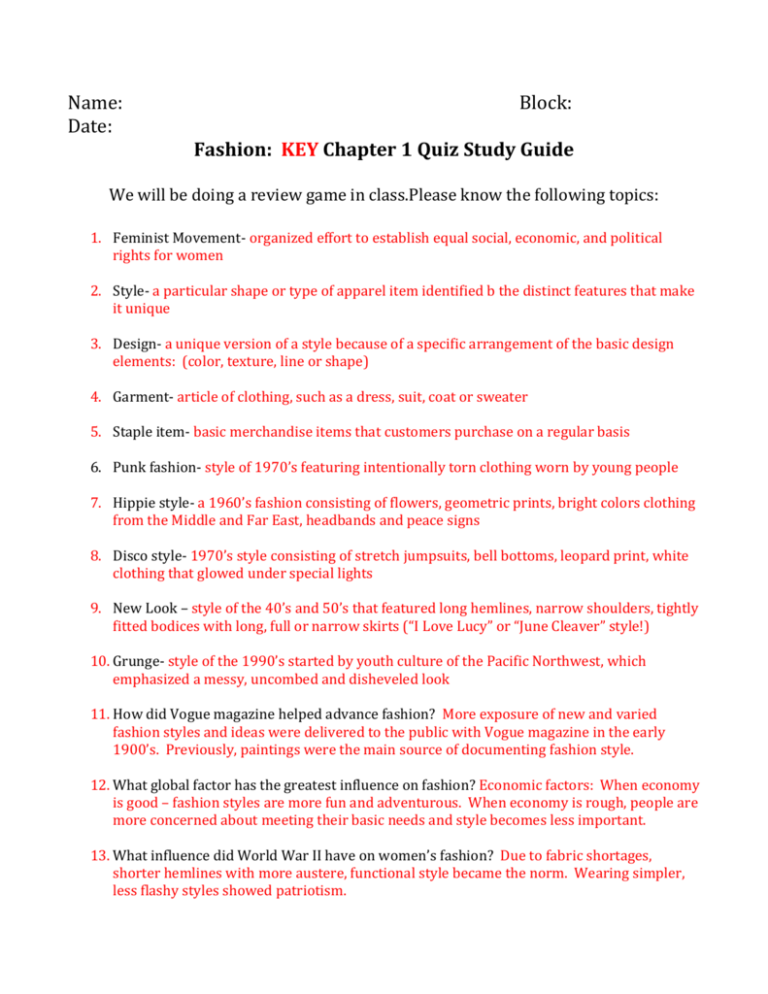
Name: Date: Block: Fashion: KEY Chapter 1 Quiz Study Guide We will be doing a review game in class.Please know the following topics: 1. Feminist Movement- organized effort to establish equal social, economic, and political rights for women 2. Style- a particular shape or type of apparel item identified b the distinct features that make it unique 3. Design- a unique version of a style because of a specific arrangement of the basic design elements: (color, texture, line or shape) 4. Garment- article of clothing, such as a dress, suit, coat or sweater 5. Staple item- basic merchandise items that customers purchase on a regular basis 6. Punk fashion- style of 1970’s featuring intentionally torn clothing worn by young people 7. Hippie style- a 1960’s fashion consisting of flowers, geometric prints, bright colors clothing from the Middle and Far East, headbands and peace signs 8. Disco style- 1970’s style consisting of stretch jumpsuits, bell bottoms, leopard print, white clothing that glowed under special lights 9. New Look – style of the 40’s and 50’s that featured long hemlines, narrow shoulders, tightly fitted bodices with long, full or narrow skirts (“I Love Lucy” or “June Cleaver” style!) 10. Grunge- style of the 1990’s started by youth culture of the Pacific Northwest, which emphasized a messy, uncombed and disheveled look 11. How did Vogue magazine helped advance fashion? More exposure of new and varied fashion styles and ideas were delivered to the public with Vogue magazine in the early 1900’s. Previously, paintings were the main source of documenting fashion style. 12. What global factor has the greatest influence on fashion? Economic factors: When economy is good – fashion styles are more fun and adventurous. When economy is rough, people are more concerned about meeting their basic needs and style becomes less important. 13. What influence did World War II have on women’s fashion? Due to fabric shortages, shorter hemlines with more austere, functional style became the norm. Wearing simpler, less flashy styles showed patriotism. 14. What are some of the reasons people wear clothes? Physical needs: protection, safety. Psychological needs: cultural identity, adornment, enhancing appearance. Social needs: affiliation, fitting in, standards. Be able to short answer at least one of the following two questions: 1. Explain two ways the feminist movement has changed fashion from the early 1900’s to the present? Discarding long dresses and corsets of the early 1900’s for the short skirts of flappers 70’s – designing more pants for women entering the workforce 80’s – power look for women; business suits and shoulder pads 2. What is different about the influences in the 1930’s/1940’s compared to the 1990’s? 30’s-40’s – Movie stars set the fashion trends in hair, makeup, clothes 90’s – people began dressing down (casual), youth culture heavily influenced the way people dressed, 90’s athletic clothes became styles, not just functional

